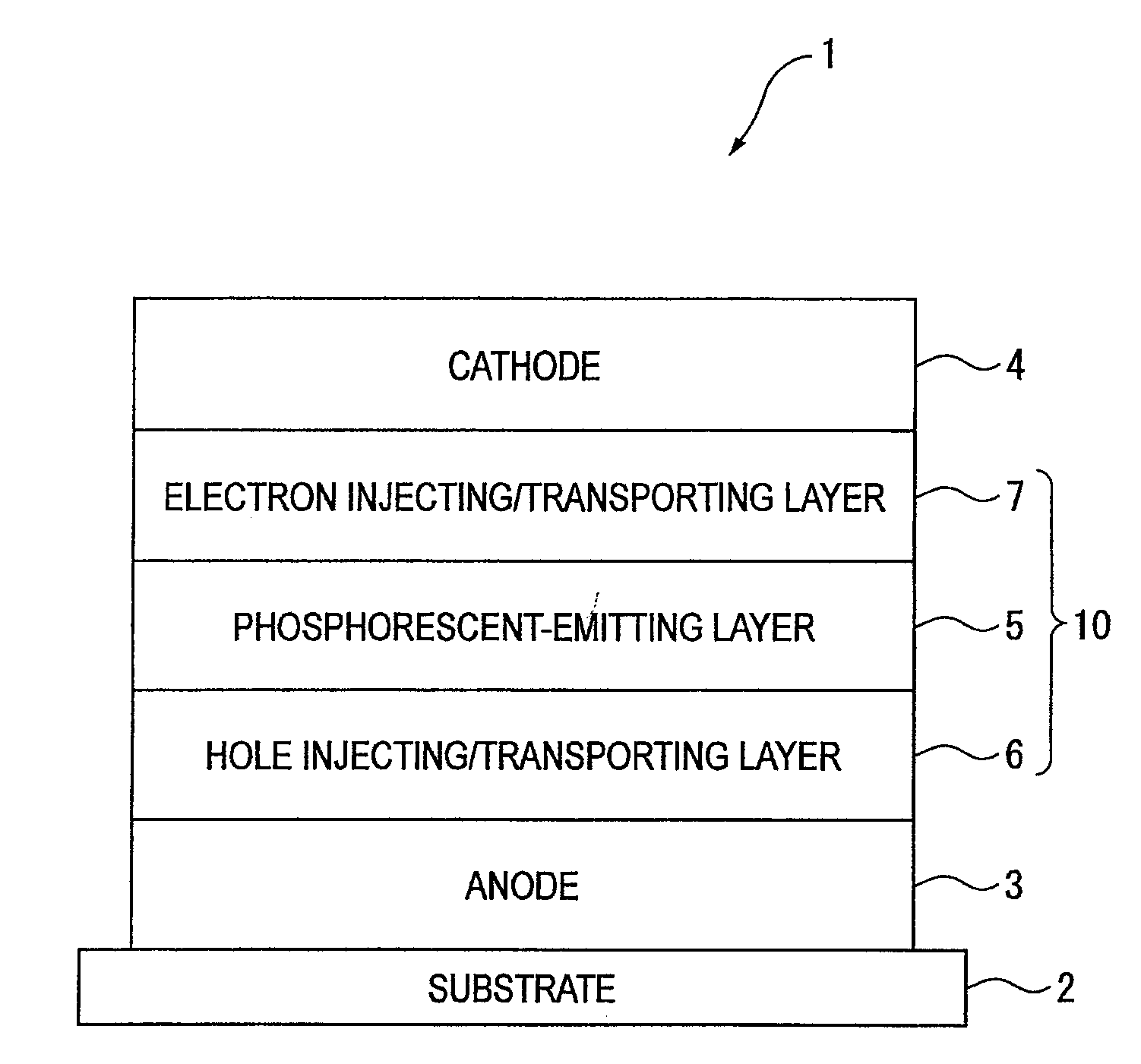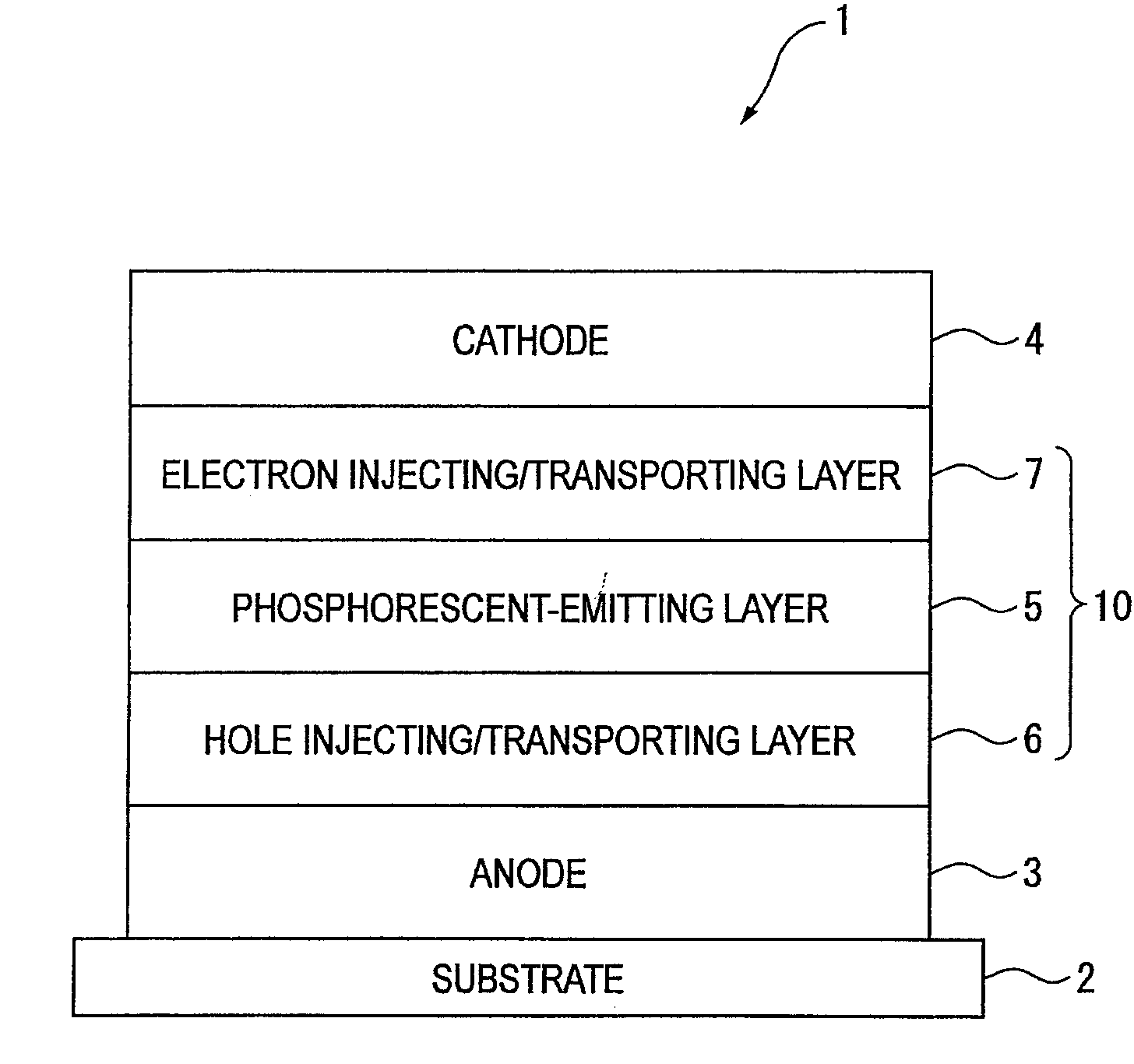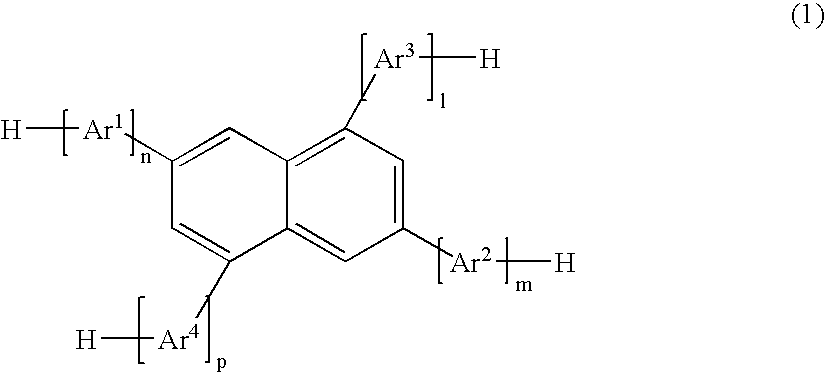Naphthalene derivative, material for organic electroluminescence device, and organic electroluminescence device using the same
a technology of organic electroluminescence and derivative, which is applied in the direction of luminescent compositions, organic chemistry, luminescent compositions, etc., can solve the problems of short life of conventional phosphorescent organic el devices, no material for organic el devices or no host materials found usable for providing such excellent organic el devices, etc., and achieve excellent luminous efficiency, heat resistance and lifetime.
- Summary
- Abstract
- Description
- Claims
- Application Information
AI Technical Summary
Benefits of technology
Problems solved by technology
Method used
Image
Examples
synthesis example
[0239]Next, the present invention will be described in further detail by exemplifying a reference synthesis example and synthesis example(s). However, the present invention is not limited to such synthesis examples.
reference synthesis example
[0240]Initially, the reference synthesis example of a compound used for manufacturing a sample of Examples will be described.
(1) Synthesis of Compound 2-1
Synthesis of 2-(3-bromophenyl) naphthalene
[0241]
[0242]Under an argon gas atmosphere, 243 g (1.41 mol) of 2-naphthalene boronic acid, 400 g (1.41 mol) of 3-bromoiodobenzene, 3.27 g (28.2 mmol) of tetrakis(triphenylphosphine)palladium(0), 6.4 L of toluene and 3.2 L of 2M sodium carbonate solution were mixed, and stirred for 24 hours while being refluxed. After the reaction in the mixture was over, the mixture experienced filtration, through which aqueous phase thereof was eliminated. After organic phase thereof was cleansed by water and dried with magnesium sulfate, toluene was distilled away under reduced pressure. Residue thereof was refined by silica-gel column chromatography, such that 303 g of 2(3-bromophenyl)naphthalene was obtained with an yield of 76%.
(2) Synthesis of Compound 2-2
Synthesis of 3-(2-naphthyl) phenylboronic acid...
synthesis examples
[0273]Next, the synthesis examples of compounds used in Examples, each of which is synthesized using the bromo compound and the boronic acid compound obtained according to the reference synthesis example(s), will be described.
(17) Synthesis of Compound 1-1
[0274]
[0275]Under an argon gas atmosphere, 7.00 g (16.0 mmol) of 3,7-dibromo-1,5-diphenylnaphthalene, 8.32 g (33.6 mmol) of 3-(2-naphthyl) phenylboronic acid, 0.74 g (0.64 mmol) of tetrakis(triphenylphosphine)palladium(0), 200 ml of toluene, 50 ml of dimethoxyethane and 48 ml of 2M sodium carbonate solution were mixed, and stirred for 10 hours at 90 degrees C. Subsequently, the reaction mixture was warmed up to room temperature, added with water and stirred for 1 hour. After the solid precipitated during the reaction was separated by filtration, the obtained solid was cleansed with water, methanol, dimethoxyethane and toluene in this order. By dissolving the obtained solid in toluene and refining the solution by silica-gel column c...
PUM
| Property | Measurement | Unit |
|---|---|---|
| Phosphorescence quantum yield | aaaaa | aaaaa |
Abstract
Description
Claims
Application Information
 Login to View More
Login to View More - R&D
- Intellectual Property
- Life Sciences
- Materials
- Tech Scout
- Unparalleled Data Quality
- Higher Quality Content
- 60% Fewer Hallucinations
Browse by: Latest US Patents, China's latest patents, Technical Efficacy Thesaurus, Application Domain, Technology Topic, Popular Technical Reports.
© 2025 PatSnap. All rights reserved.Legal|Privacy policy|Modern Slavery Act Transparency Statement|Sitemap|About US| Contact US: help@patsnap.com



